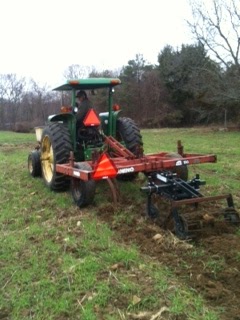As you can see from the pictures, a water wheel planter is a tractor attachment that has two yellow jugs of water, shelving for the trays of plants, a wheel with spikes to poke holes into the plastic, a hose to water the soil, and two seats for the field workers to sit. Today, Tom used a single wheel for 1 row planting that plants the plugs 8" apart but if he were planting peppers or another crop he may have used a different wheel that allowed for different spacing. Since he was seeding in single rows he had to go down each row twice.
Back at the greenhouse 150 more trays of Butter & Sugar corn, 2 varieties, are waiting to go out for acclimation. When people ask about corn one of the first questions that tends to come up is, "Was this corn seeded from GMO seeds." You'll be happy to know that we DO NOT use GMO seeds.






